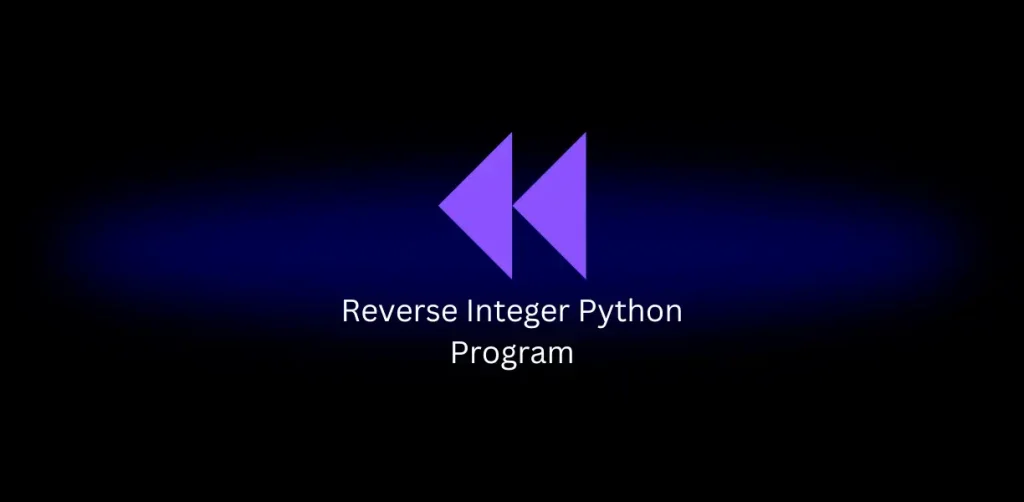Hi everyone! In this article, we’ll guide you through a detailed explanation of the Reverse Integer Python Program [Problem Link].
Examples:
Example 1:
Input: x = 123
Output: 321
Example 2:
Input: x = -123
Output: -321
Example 3:
Input: x = 120
Output: 21Constraints: -231 <= x <= 231 – 1
1.Optimal Solution [Reverse Integer Python Program]
Problem Statement:
Objective: The code aims to solve the problem of reversing the digits of a 32-bit signed integer “x”.
Purpose: The function reverse is designed to take an integer “x”, reverse its digits, and return the reversed integer. If the reversed integer overflows beyond the 32-bit signed integer range, it returns 0.
Expected Input and Output:
- Input: A 32-bit signed integer “x”.
- Output: The reversed integer or 0 if the result overflows.
Also learn Python Program to Count Number of Digits.
Intuition and Approach:
Intuition: To reverse the digits of an integer, we can repeatedly extract the last digit and build the reversed number step by step. If the original number is negative, we handle the sign separately.
Approach:
- Check if the number is negative and store this information
- Convert the number to its absolute value for easier processing
- Initialize a variable to store the reversed number
- Use a loop to extract the last digit of the number and append it to the reversed number
- Ensure the result does not overflow the 32-bit signed integer range
- Restore the sign if the original number was negative
- Return the reversed number or 0 if it overflows
Code:
class Solution:
def reverse(self, x: int) -> int:
is_negative = False
if x < 0:
is_negative = True
num = abs(x)
answer = 0
while num > 0:
last_digit = num % 10
answer = (answer * 10) + last_digit
num //= 10
if answer < (-(21**31)) or answer > (2**31 - 1):
return 0
return -answer if is_negative else answer- Check for Negativity: A boolean variable is_negative is set to True if “x” is negative
- Absolute Value: The absolute value of “x” is stored in “num” for easier manipulation
- Initialize Answer: An integer answer is initialized to 0 to build the reversed number
- Loop to Reverse Digits:
- While “num” is greater than 0, the last digit is extracted using num % 10
- This digit is appended to answer by multiplying answer by 10 and adding the digit
- The last digit is removed from “num” using integer division by 10
- Overflow Check: After the loop, check if the reversed number is within the 32-bit signed integer range. If not, return 0.
- Restore Sign: If the original number was negative, return the negated result. Otherwise, return the result.
Dry Run:
Let’s walk you through a step-by-step execution with a sample input
Potential Edge Cases:
- Zero Input:
- If x = 0, the function should return 0
- Negative Numbers:
- For x = -123, the function should return -321
- Overflow:
- If reversing the number causes it to exceed the 32-bit signed integer range, the function should return 0.
- Examples: x = 1534236469 should return 0 because the reversed number 9646324351 exceeds the 32-bit limit.
Time and Space Complexity:
Time Complexity: The time complexity is O(log10 . N), where n is the absolute value of the input number. This is because the number of iterations in the loop is proportional to the number of digits in the number.
Space Complexity: The space complexity is O(1). The function uses a fixed amount of space regardless of the input size.
For any changes to the document, kindly email at code@codeanddebug.in or contact us at +91-9712928220.
